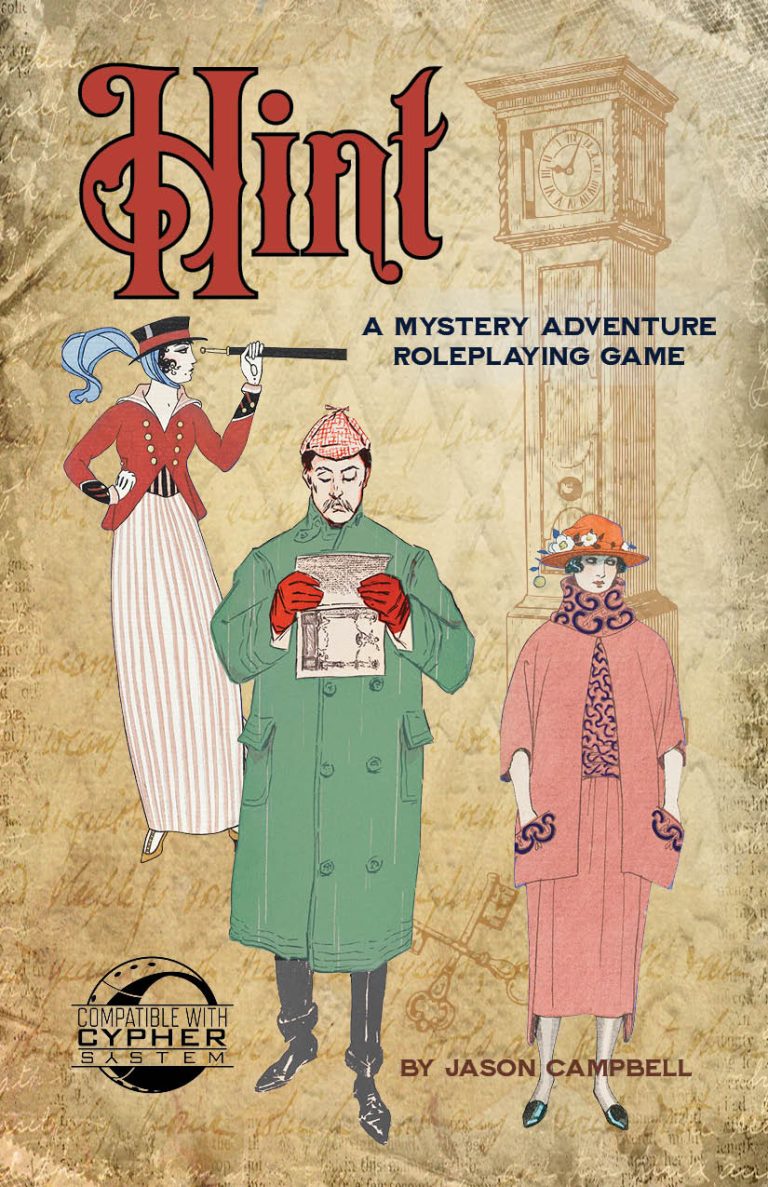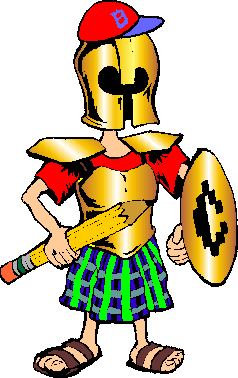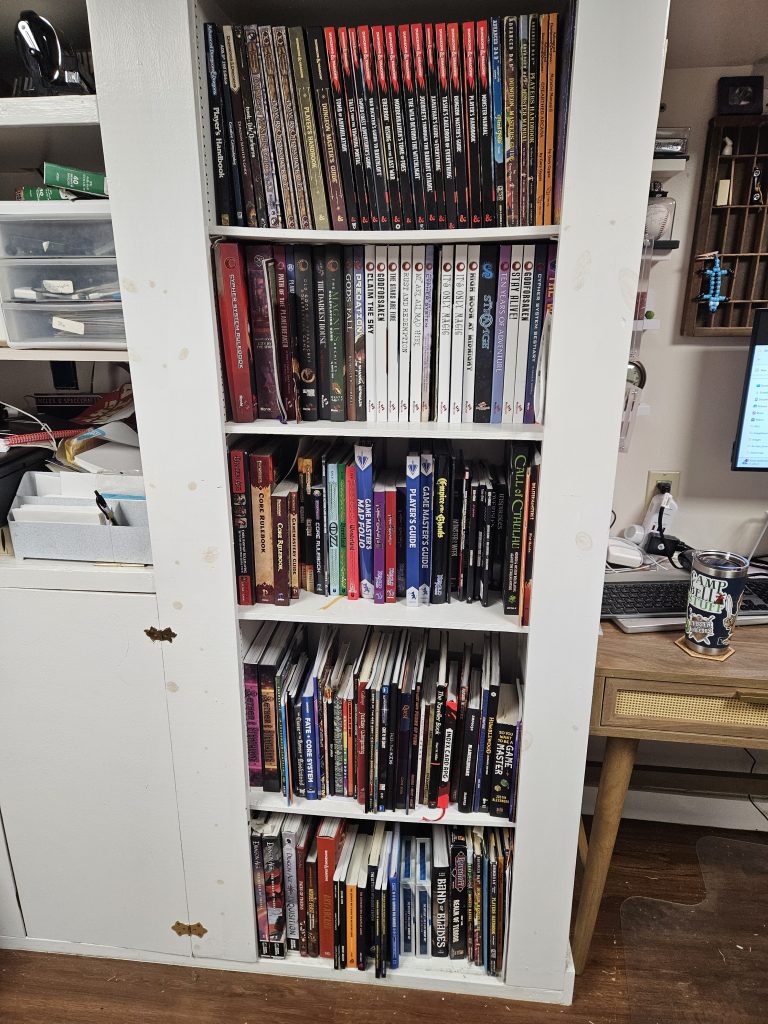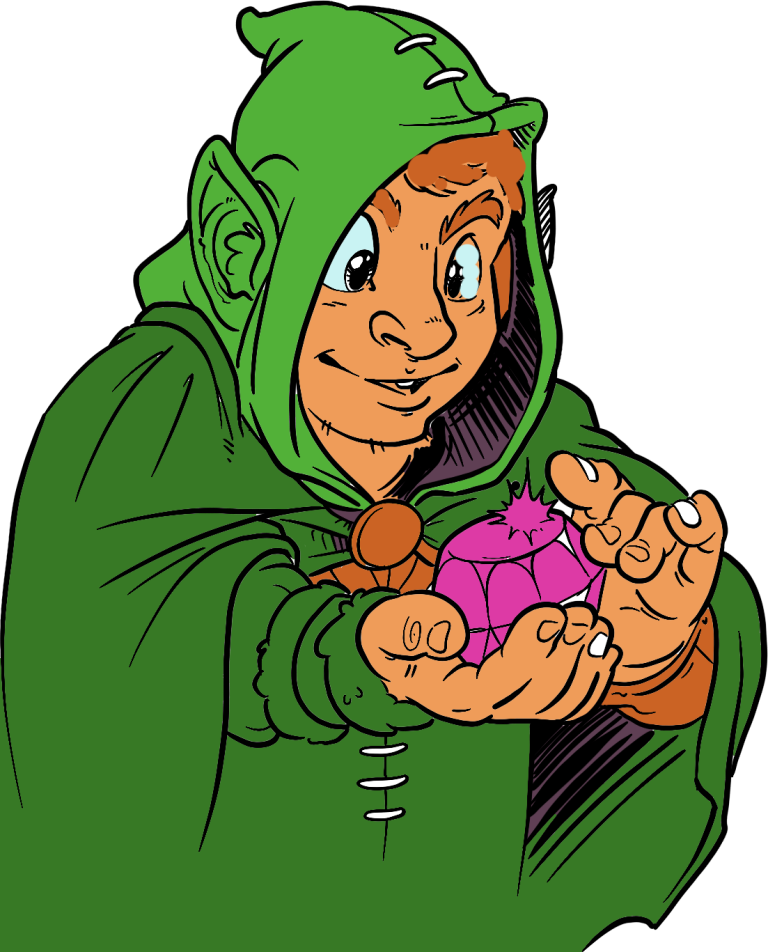By Jason Campbell
Index Card RPG is a rules light ttrpg from Runehammer games. The hardcover printing is 400 pages (sized 6” x 9”). To the publisher’s credit the rules are released under a Creative Commons 4.0 license. The book is written, layed out and illustrated in a welcoming, casual style. It’s made to be a framework that rpg tables can use to create the games they prefer. It’s a d20 system, but more simplified than most fantasy role playing games.
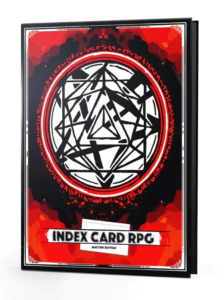
The Basic Rules
The primary structure of an Index Card RPG (ICRPG) game is that the entire game session is turn based. That means that you’re not just taking turns in combat, but in all aspects of the game. This ties into the idea that the game scenario is broken into scenes. Each scene has a target value (usually 10, 12, 15 or 18). In play, the GM describes the scene and declares the target, then players declare what action they’d like to take, in a clockwise order around the table. Any action a player wants to take that has a chance of failure requires a roll against the target number. The player rolls a d20 and applies any modifiers their PC may have and a result of the target number or higher indicates success. That means if the PC wants to attack any creature in the scene, they need to roll against the target. Likewise if the PC tries to jump over a chasm, they roll against the target and even if they want to heal their friend, they roll against the target number. This single target system makes the game easy to understand and means the turns go quickly. In my opinion the idea of the entire session being played in turn order makes it feel a little too much like a standard board game.
Creating Player Characters
PCs in ICRPG have the 6 common stats of many trpgs: Strength, Dexterity, Constitution, Intelligence, Wisdom and Charisma. Players don’t roll for these stats, instead they assign 6 points to the stats in any arrangement they want. These points are modifiers to d20 rolls. Each time a PC takes an action such as jumping, climbing, using a weapon or casting a spell, the player and GM decide what stat applies to the action, and the player applies that modifier to the d20 roll. Actions that require rolls are classified as either checks or attempts. A check is an instantaneous action, so if your d20 roll succeeds the action happens. And attempt is an action with a variable result, so the player rolls a d20 against the target and if it’s successful, they then roll for effort. The higher the effort the more successful the attempt. Each action falls into a category and each category has a different die type associated with it: basic (d4), weapons and tools (d6), guns (d8), magic and energy (d10), and ultimate (d12). Each player has 4 points to add as modifiers to some effort categories as they see fit. ICRPG has no levels, although pcs can gain new abilities as they reach milestones established by the GM. The pc creation system is very quick and easy to understand, a definite plus.
Monsters and Magic
The rulebook also has statistics for monsters and descriptions of spells. The basic magic system includes a list of spells, categorized as either Intelligence or Wisdom spells, which tells you what ability is used to cast it. Later in the book there’s a more complex magic system using a point system to limit how many spells of varying power a caster can cast in a day (interestingly this optional magic system is the only time in the game where index cards would actually be used). Here is an example of where the book’s casual writing style fails. In the complex magic system there’s a reference to mages, so we can assume only mages (a pc type in the fantasy setting) can cast spells using this system. But the basic default magic system has no indication of whether only certain classes can cast spells? In the fantasy genre there are mage and priest character types, which presumably are casters. But can a mage cast wisdom spells, or only intelligence based spells? Can a bard cast spells? Or a warrior? The book doesn’t clarify this. An experienced GM could just decide with their table how the system should be interpreted, but I see this as a problem especially for less experienced GMs.
Game Settings
Beyond that the book describes 5 settings: fantasy, sci-fi, superheroes, spooky west, and a prehistoric setting. Some of the settings are more interesting than others, but all are roughly described, something of frameworks for the GM to build off. The interesting thing is that what setting you’re playing affects how powerful pcs are. The western and prehistoric games use basic everyman types, while fantasy allows for spell casting, and superheroes allow pcs to have superpowers.
In Conclusion
I’ve run a few one-shots of this and I like the system for what it is, but I feel it does have limitations. As mentioned before the loose writing style of the rulebook leaves a lot to interpretation, and I could see that being a problem for tables that need explicit rules, or for GMs with less experience. Some players I played with felt that having a single target for each scene was an oversimplification. Others appreciated it for the way it sped up the game. I ran one-shots for players who’d never played ICRPG before and it was the system which required the least time to explain and get playing. I’m not sure that I could successfully run a long form campaign (with most players I know), but it’s really fun for a one-shot.
Have you played Index Card RPG? What did you think? Let us know in the comments below!


